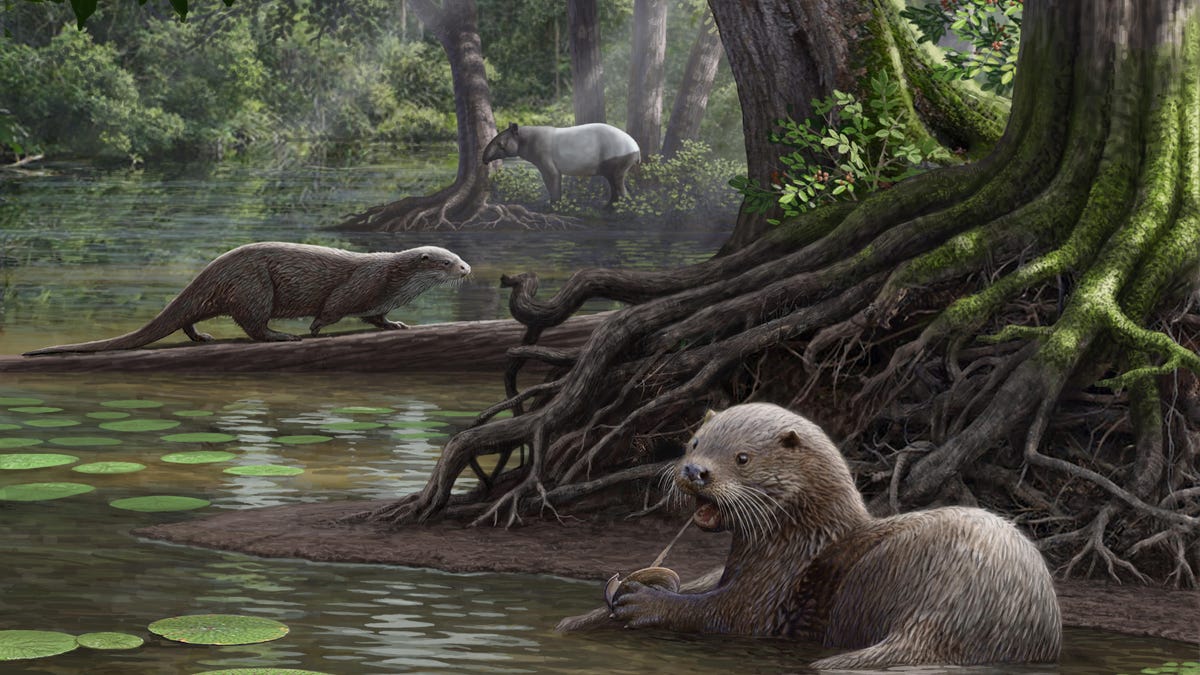Prehistoric wolf-sized otter had a surprisingly killer bite
With the help of 3D modeling, scientists discover an ancient otter may have been a top dog among predators.
Modern-day otters are pretty charming. They're playful and cute. But you might not think Siamogale melilutra, an otter that lived 6 million years ago, was cute if you met one.
A study led by the University at Buffalo found the large, prehistoric otter was likely a top predator with a shockingly powerful bite.
The ancient otters got up to 110 pounds (50 kilograms) in size. North American river otters can get up to around 30 pounds (14 kilograms), though the endangered giant otter found in South America can weigh over twice that.
The researchers used fossils to help create 3D computer models of the prehistoric otter's jaws to compare with modern otters. Today, smaller otters have sturdier jaws than larger ones. The wolf-sized prehistoric otter defies this modern trend with researchers saying its jaws "were six times sturdier than expected."
"Our findings imply that Siamogale could crush much harder and larger prey than any living otter can," said lead researcher Z. Jack Tseng with the University at Buffalo.
This 3D reconstruction shows a Siamogale melilutra skull and jaw on the right and a much smaller modern common otter on the left.
The otters' actual diet is unknown, but the jaws could have crushed everything from rodents to large mollusks, which would have been handy in environments they lived in.
"In the shallow swamp of South China, it's possible that an abundance of big clams drove these giant otters to acquire their rare traits, including their crushing teeth and robust jaws," said paleontologist Xiaoming Wang with the Natural History Museum of Los Angeles County.
The researchers published the findings this week in the Scientific Reports journal with the title "Feeding capability in the extinct giant Siamogale melilutra and comparative mandibular biomechanics of living Lutrinae."
Virtual reality 101: CNET tells you everything you need to know about VR.
CNET Magazine: Check out a sample of the stories in CNET's newsstand edition.


